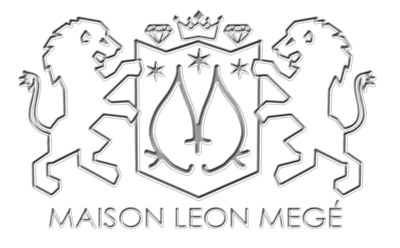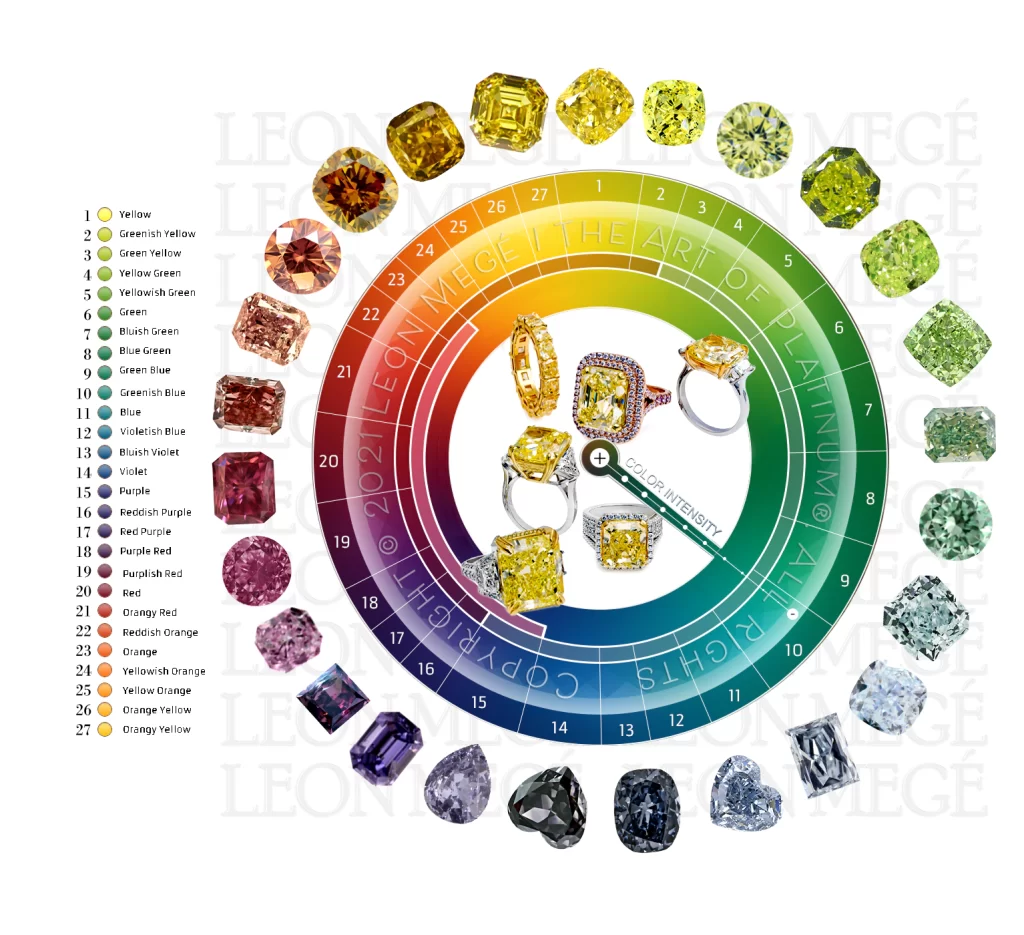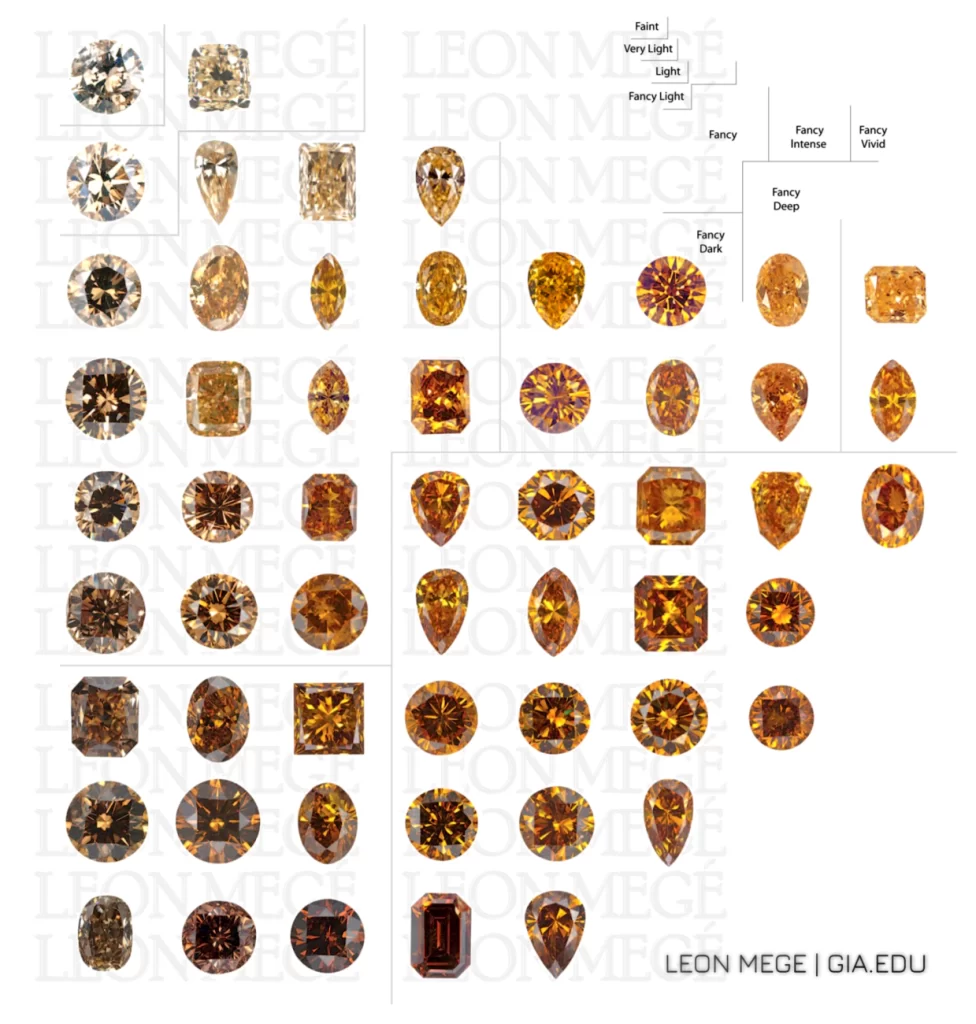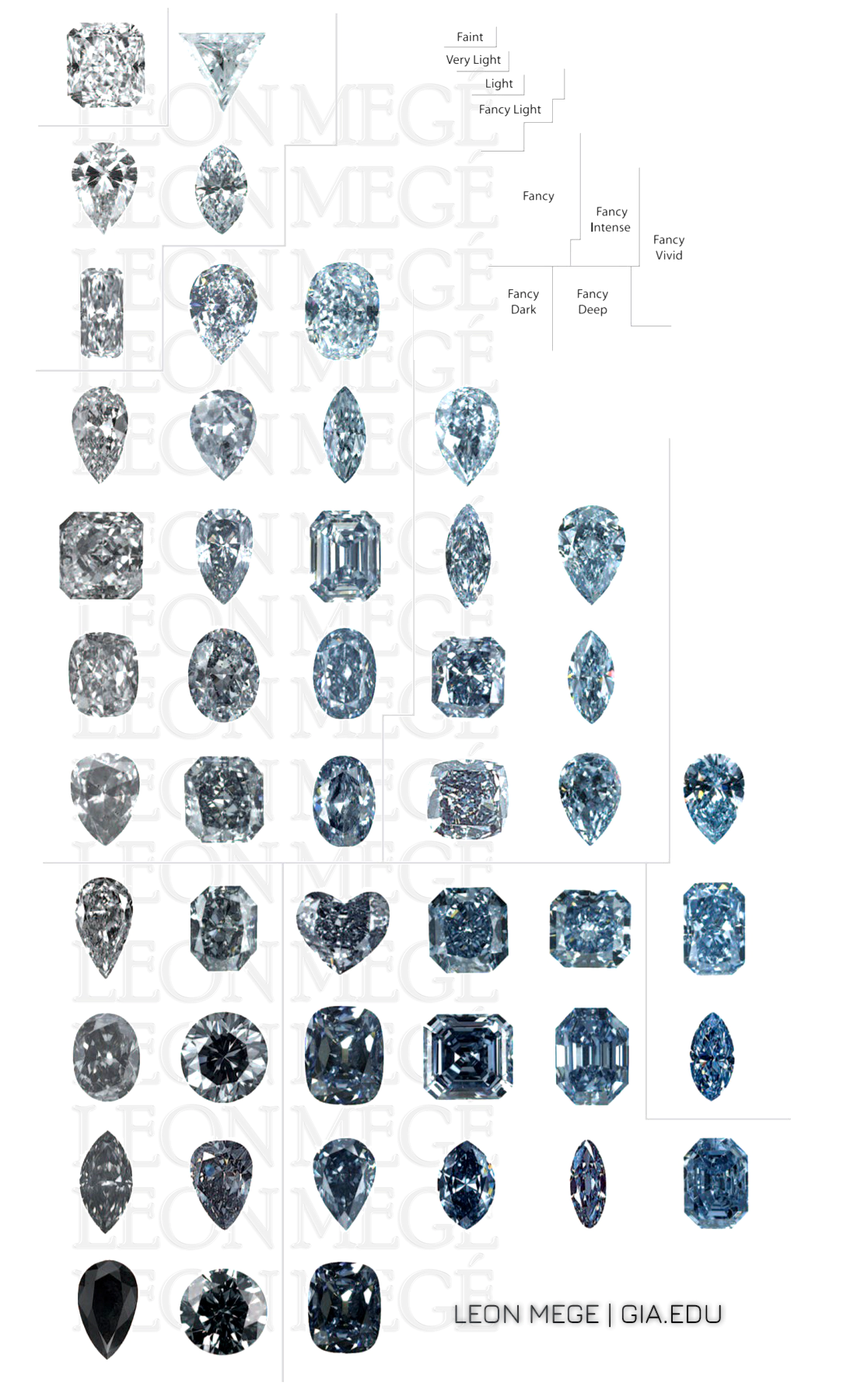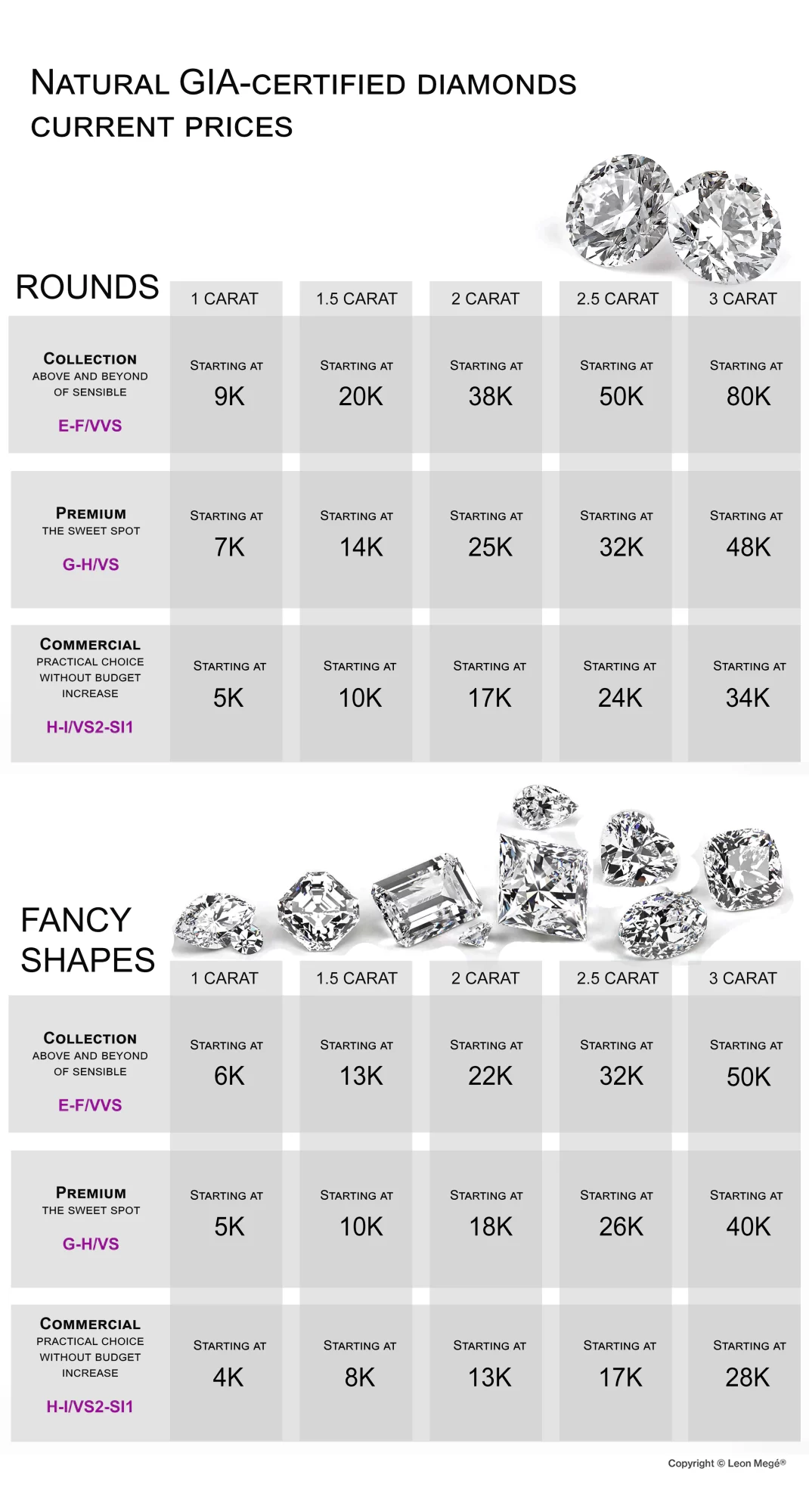To paraphrase George Orwell: All diamonds are rare, but some are rarer than others.
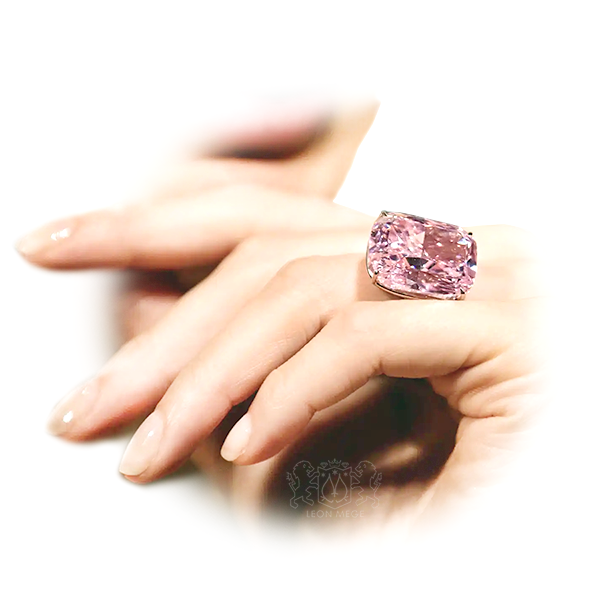
Leon Mege is your best source of fancy diamonds
Leon Mege is the best wholesale source of any fancy-colored diamond, including rare Argyle diamonds from the most reputable diamantaires. Leon Mege is the industry leader in the world of fancy-colored diamonds. Our extensive inventory gives you maximum options. Our expertise in high-end jewelry will ensure that the diamond’s fancy color and brilliance are maximized while the price is minimized.
Fancy-colored diamonds are among the rarest and most valuable. A diamond’s value plummets as the color tint becomes more pronounced as it gets closer to the end of the color-grade alphabet. But once it passes the Z color grade, the opposite happens: the more vibrant and saturated the color, the more expensive and valuable the diamond becomes.
Cut and clarity
The fancy color in diamonds is caused by molecular lattice distortion, which happens randomly. Because of that, it is extremely challenging to cut fancy-colored diamonds. The diamond has to be oriented inside the rough crystal to produce the deepest, more pronounced color and largest possible yield. These contradicting goals require experience and deep knowledge of diamond cutting gained with experience and mathematical skills.
When it comes to fancy-colored diamonds, clarity is the quality given the least consideration. The hue and intensity are far more important than the clarity of the diamond itself. The effect of the inclusions on a colored diamond depends on the type and color of the imperfection and its location. The color of the inclusion cannot contrast with the main hue of the colored diamond.
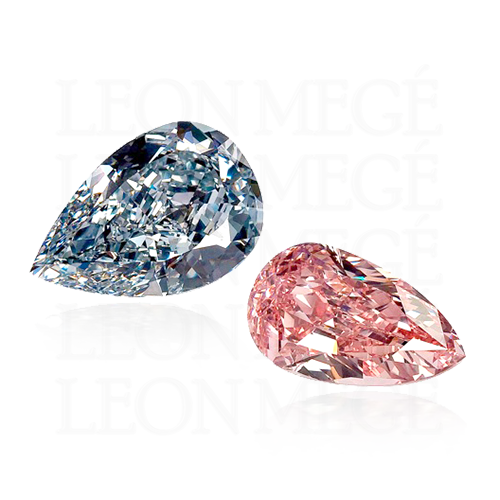
The order of colored diamonds rarity
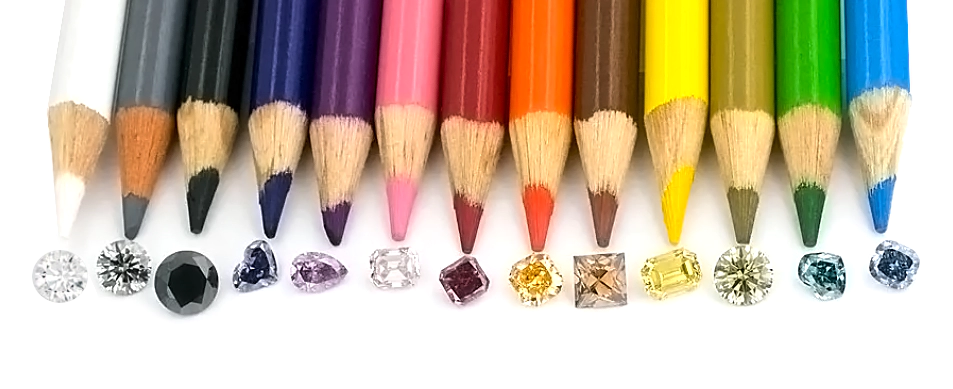
- Green
- Red
- Violet
- Pink
- Blue
- Orange
- Yellow
- Fancy white
- Brown
- Black
Pink diamonds
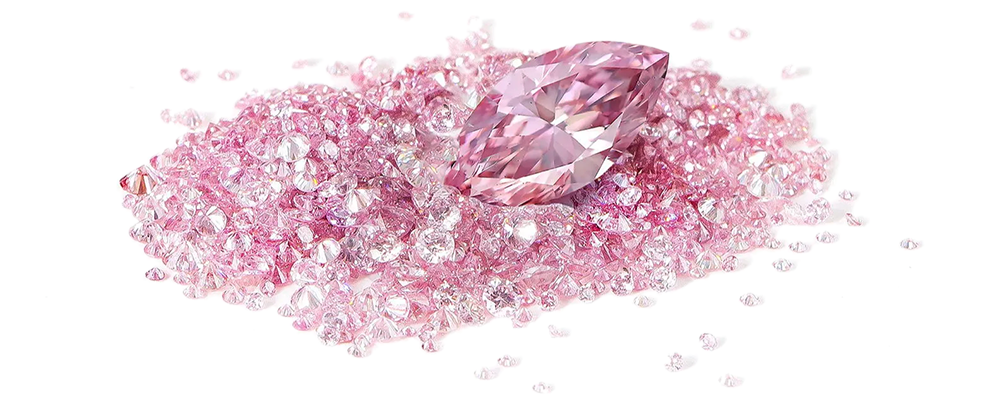
Revered for their incredible beauty and mythical origins, Argyle pink diamonds are highly coveted as one of the rarest stones in the world. Argyle pink diamonds are precious and rare, steeped in history, and stunningly beautiful. The Australian mine has been the world’s only consistent source of pink diamonds, accounting for more than 90% of the global supply.
Maestro Mege is a graduate of the internationally renowned Gemological Institute of America (GIA) in New York and has over 40 years of experience assisting clients in selecting the most desirable Argyle stones. Our exclusive partnership with Argyle-affiliated diamantaires gives us unprecedented access to the treasures of the Argyle diamond mine.
Australia is home to many incredible and unique gemstones; however, pink diamonds exist in a class of their own. Until pink diamonds started to trickle out of the Argyle mine in the 1980s, they were so rare that they barely registered on the collector’s radar.
At its height, the Argyle mine, located in the remote East Kimberley region of Western Australia, produced 9 out of 10 world’s pink diamonds even though the pink material was less than one percent of the total output. Moreover, only 9.6% of the Argyle pinks are larger than 0.20 carats, and less than one percent of Argyle pinks are one carat or larger. An entire year’s worth of Argyle pinks over half a carat in size can fit in a palm of a hand.
Each certified Argyle Pink Diamond over 0.08ct is laser inscribed with a unique lot number visible under high magnification. A mark of assurance, the inscription, and the accompanying Argyle identification and Authenticity certificate provide an important guarantee of the uninterrupted chain of custody from the mine to the point of sale.
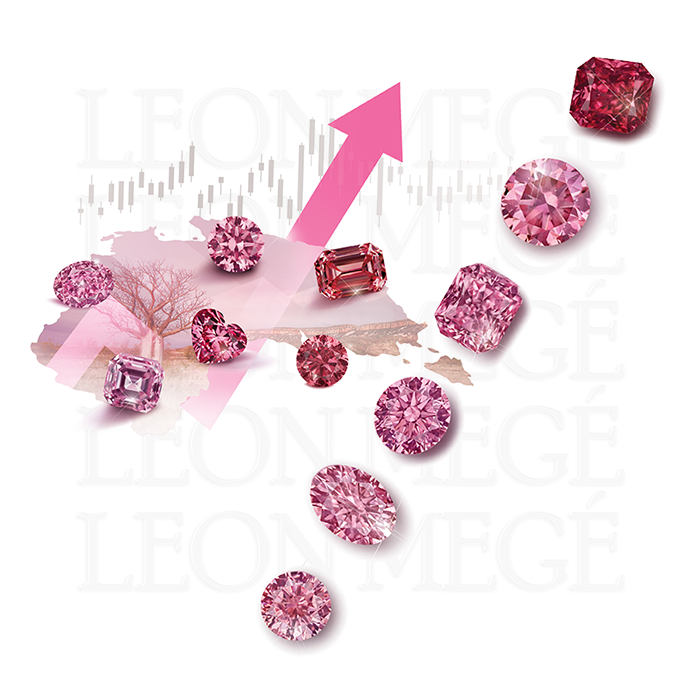
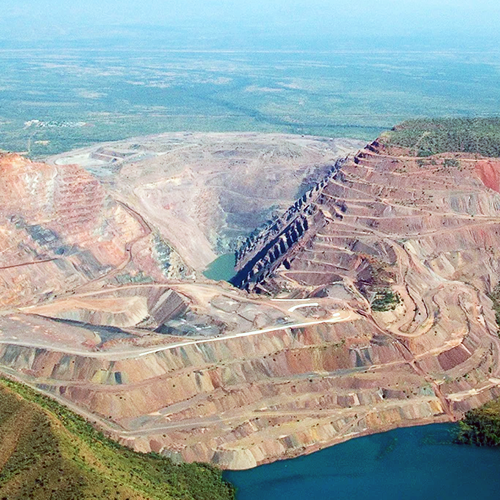
The Argyle mine has now been officially closed. No new diamonds are coming to the market, and the supply dwindles daily. This leads to rapid and dramatic price increases, good news for current owners. In fact, following the closure of the Argyle mine in 2020, demand for pink diamonds whipped into a frenzy. The mine may be depleted, but Argyle pink diamonds will remain a coveted collectible for many generations.
Argyle diamonds are graded on a scale from 1 to 9 for color intensity.
- Very intense
- Intense
- Strong
- Medium
- Medium Light
- Light
- Very Light
- Blush
- Light Blush
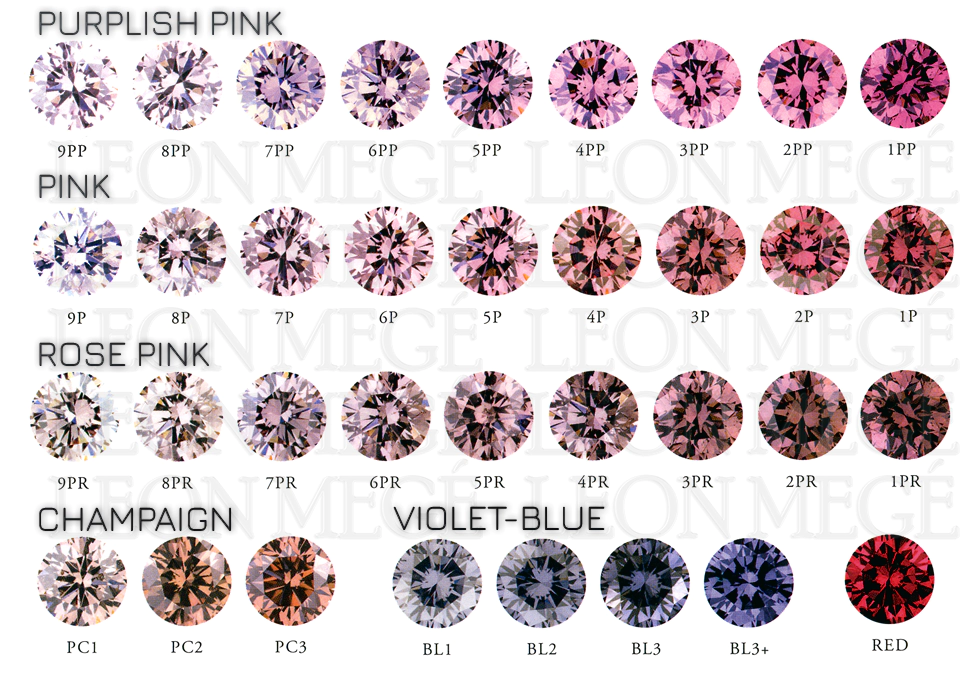
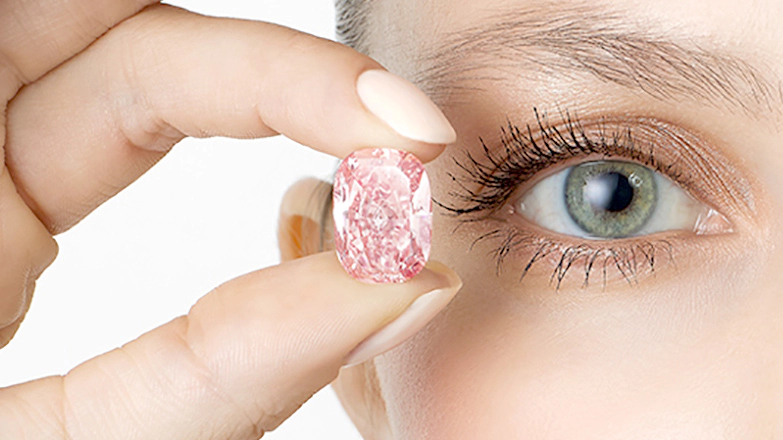
Why buy a pink diamond?
Pink diamonds are exquisite stones that look stunning and make a substantial investment, thanks to their scarcity. The price of Argyle pinks has increased dramatically since the mine was closed in 2021, so every unearthed stone is an irreplaceable treasure.
Pink diamonds value
Pink diamond value depends on the color, hue, saturation, and overtone. The colored diamond’s clarity and cut have a secondary role in the evaluation, as well as its carat size. For example, an exceptional 11.15-carat internally flawless pink diamond, “Williamson Pink Star,” sold for a world record USD 83 million.
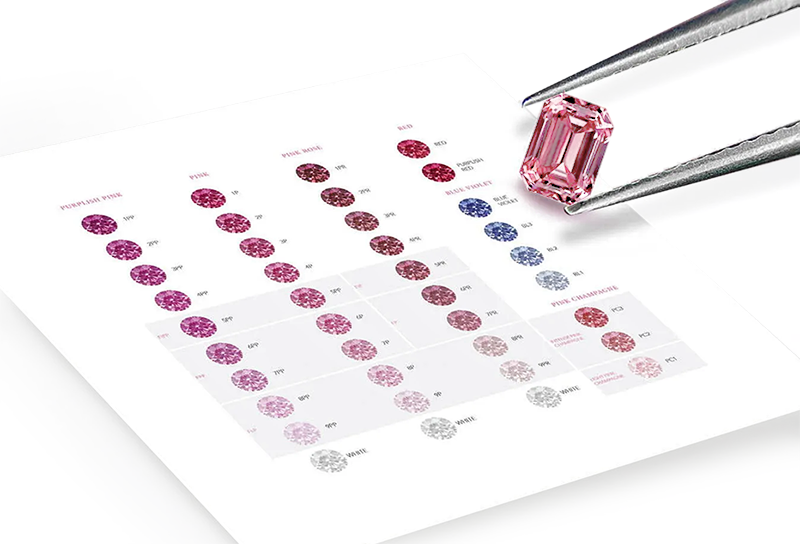
Fancy Yellow diamonds
Fancy yellow diamonds fall outside the traditional D-Z color grade scale. GIA has six color grades: Fancy Light (the least desirable), Fancy Yellow, Fancy Dark, Fancy Deep, Fancy Intense, and Fancy Vivid (the most desirable). These grades indicate how intense the color is. Stones with high saturation and color depth are the most valuable. How desirable are fancy yellow diamonds? Only 4 of 9 yellow colors are desirable on the intensity and tonality scale.
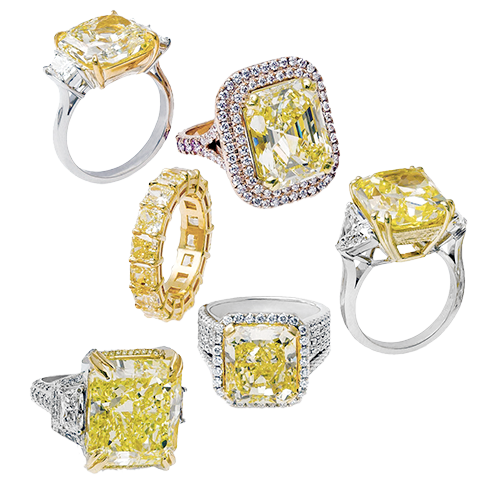
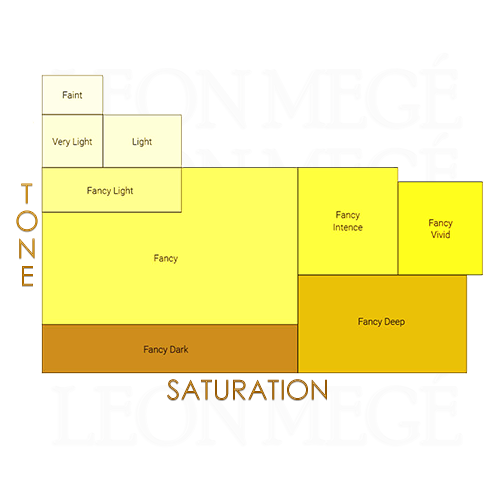
Tone and Saturation
The primary aspect is the color of the stone, which can be a single hue (“yellow”) or a combination like “brownish-pinkish yellow,” indicating more yellow than brown or pink. The last hue is the predominant color. The tone/saturation balance in fancy yellow diamonds has two vectors: the color saturation (its strength) and the light-to-dark intensity.
Color-grading yellow and other fancy diamonds are next to impossible due to the human eye’s subjectivity. All attempts to use machines like spectrometers to grade failed because in 3D objects the color modifier, transparency, and refraction are influenced by the external light.
Recutting to improve color
In the fall of 2022, a flawless Fancy-Deep-Brownish-Yellow 303.10-carat diamond called “Golden Canary” was poised to fetch $15 million at Sotheby’s. The pear-shaped diamond was re-cut from a 407-carat shield-shaped Incomparable Diamond, one of fifteen pieces of 890-carat rough discovered in Mbuji Mayi in the Democratic Republic of Congo by a girl playing in a pile of rubble.
Previously, Sotheby’s sold a 100-carat cushion-shaped fancy vivid yellow diamond, Graff Vivid Yellow, in Geneva in 2014 for US$16.3 million, a world auction record for a yellow diamond.
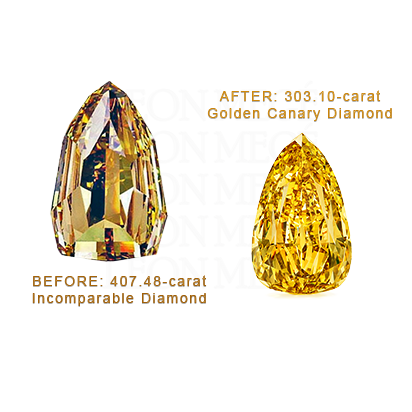
Fancy Orange diamonds
…pure orange diamonds are…exceptionally rare naturally, which is why they are desirable collectors’ specimens… S.C. Hofer, 1988
Traditionally orange is the sixth rarest color in diamonds, just after green, red, violet, pink, and blue.
In ascending order, the natural fancy-colored orange diamonds come in seven grades: Faint Orange, Very Light Orange, Light Orange, Fancy, Fancy Intense Orange, Fancy Vivid Orange, and Fancy Deep Orange. Fancy Vivid and Fancy deep are the most desired hues.
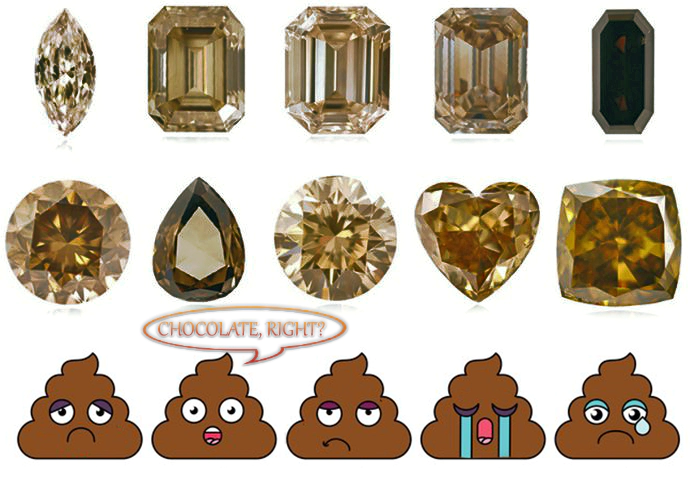
Are "chocolate" diamonds valuable?
Brown diamonds in various shades of brown are unattractive and pretty much worthless. Only extremely rare red, pink, green, and blue diamond colors were considered desirable and immensely valuable in the past. Until recently, even fancy yellow diamonds were less popular than colorless stones. That changed, of course. Clever marketing has turned the vile browns once destined for industrial use into “Chocolate Diamonds,” helping these worthless gems to proliferate.
Red diamonds
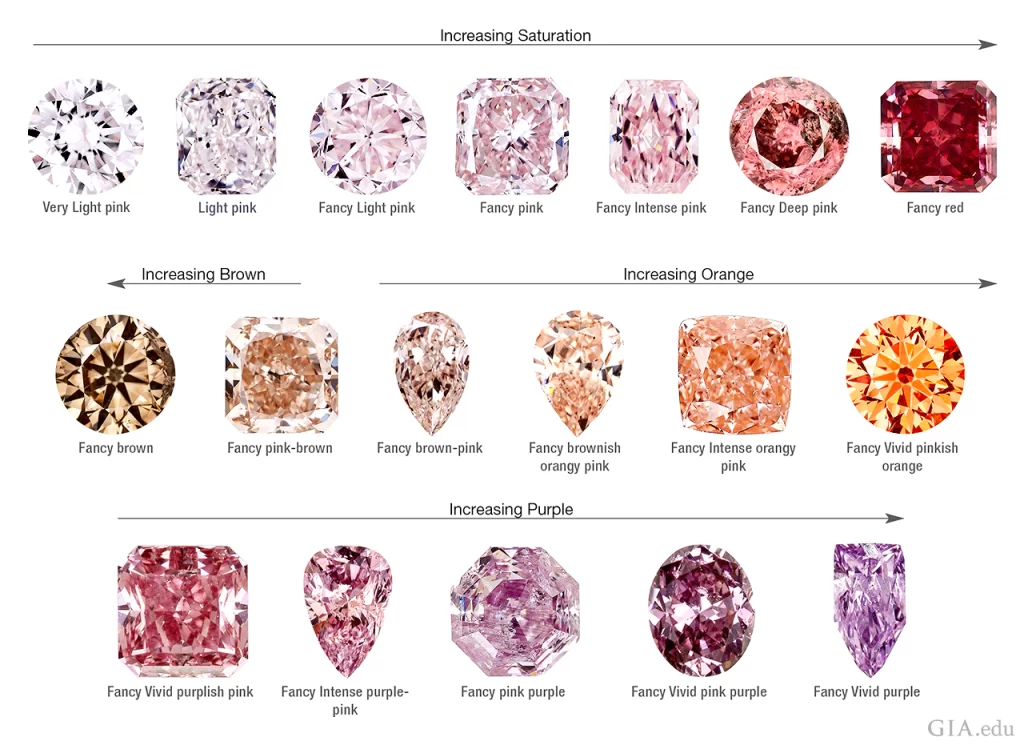
Fancy Green diamonds
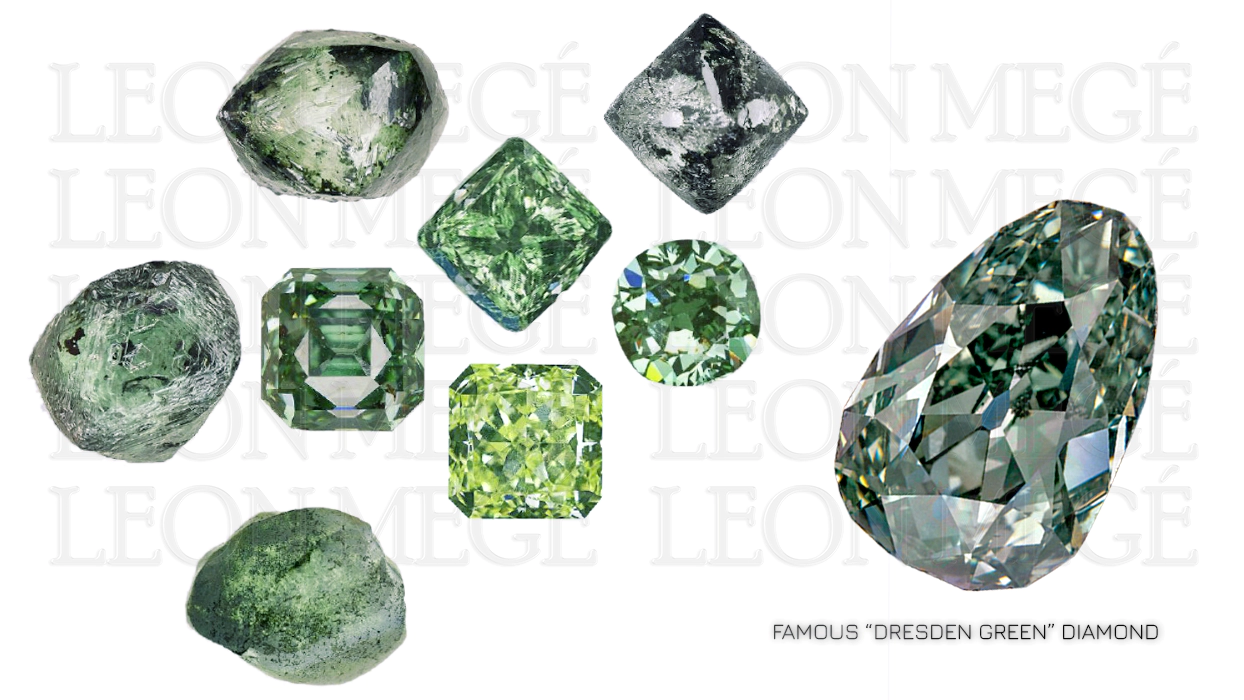 Naturally green diamonds with saturated hues are some of the rarest and most sought after. They are colored either by structural defects induced by natural radiation or nitrogen, hydrogen, or nickel impurities. Today, extremely rare natural green diamonds are found in South America or Africa.
Naturally green diamonds with saturated hues are some of the rarest and most sought after. They are colored either by structural defects induced by natural radiation or nitrogen, hydrogen, or nickel impurities. Today, extremely rare natural green diamonds are found in South America or Africa.
Artificial irradiation has been used since the late 1940s to produce green diamonds making gemological identification nearly impossible since the process mimics the effects of natural exposure. The only positive source of the color origin is a historical record of the diamond color pre-dating nuclear technology.
Fancy Blue diamonds
Fancy blue diamonds are the rarest type of colored diamond, and they can range in color from a light sky blue to a deep royal blue. However, under certain lighting conditions, they can appear black. This is because the blue color of a fancy blue diamond is caused by the presence of boron atoms in the diamond’s crystal structure. When these boron atoms absorb light, they emit blue light. However, if the light is not strong enough or is of a certain wavelength, the boron atoms will not absorb it, and the diamond will appear black.
A few factors can affect how a fancy blue diamond appears black. One is the type of lighting. If the light is dim or of a warm color, the diamond is more likely to appear black. Another factor is the cut of the diamond. A poorly cut diamond will scatter light more than a well-cut diamond, making it more likely to appear black. Finally, the size of the diamond can also affect how it appears. A smaller diamond will be more likely to appear black than a larger diamond.
If you are considering buying a fancy blue diamond, it is important to know that it may appear black under certain lighting conditions. If this concerns you, you may want to consider buying a diamond certified by a reputable gemological laboratory. This will ensure that you get a genuine fancy blue diamond and that it will be properly graded for color and clarity.
Are black diamonds real? Yes, they are real. Real crap.
A black diamond” called carbonado, is a natural polycrystalline aggregate of tiny graphite and carbon crystals grown together at different angles. The tiny crystals are stuck together at different angles, absorbing the light and making the stone opaque. They are essentially 4 billion years old clumps of diamond dirt formed in a supernova explosion long before the Solar System was born. Carbonados are found only in a few places, notably Central Africa and Brazil. Most are grey but have a porous surface that allows liquid dyes to penetrate. Boiling carbonados in spent motor oil turn them black. Without dyeing, they are often mistaken for marcasite – polished iron pyrite commonly used in costume jewelry.
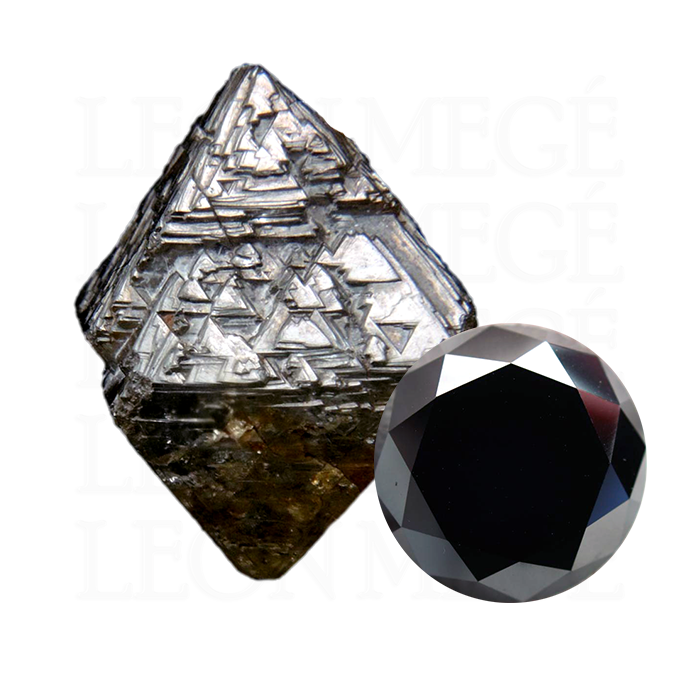
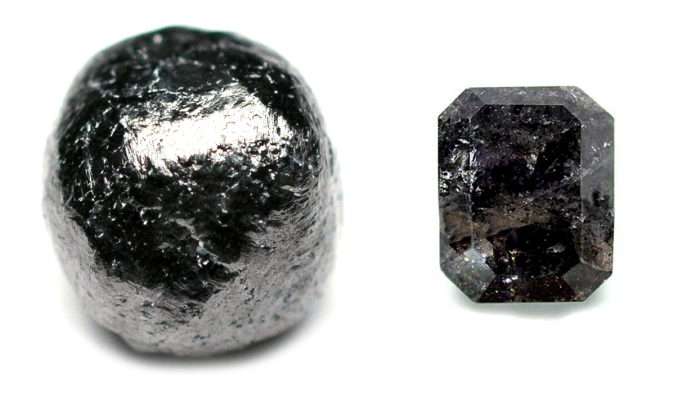
Carbonados can be irradiated and heated to darken their color. Irradiated carbonados are jet black resembling onyx or black spinel. Until recently, black diamonds were considered worthless and unsuitable for jewelry and used primarily as abrasives and drill bits. Even today, black diamonds are cheap by diamond standards costing very little compared to white diamonds.
Carbonados unique chemistry suggests extraterrestrial origins, which plays well to the consumers’ ears. Most carbonados have strong luminescence. They emit light in the darkness, which is always fun. Carbonados are treasured collectible novelties, along with petrified dinosaur dung and singing Bass plaques.
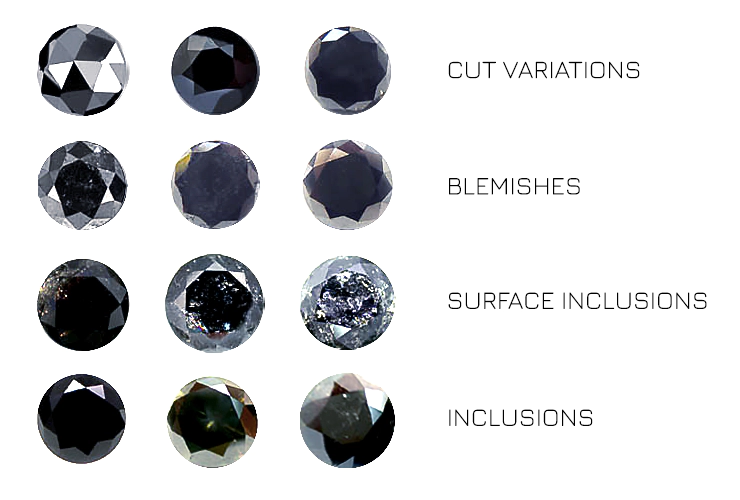
The curse of the Black Orlov
The 67.50-carat cushion-cut diamond plucked from the eye of the Brahma idol at a small Indian shrine was brought to New York by a diamond dealer J.W. Paris. Displeased, the god of creation, Brahma, put a magic spell upon all future owners of his eye. Indeed, three owners jumped to their death shortly after that. In 1932 J.W. Paris fell from the roof of a New York skyscraper. In 1947 Russian princess Nadia Vyegin-Orlov jumped from a building in Rome. Her sister Lionila Baryatinskaya followed her shortly after that. The curse fizzled when the stone finally got into the hands of a New York dealer Charles F. Winson. He mounted the stone in a diamond-and-platinum necklace valued at $150,000 at the time. Nobody has jumped since.
Famous black diamonds
- The 489.07-carat black diamond is yet to be named and is rumored to be priced at just under two million US dollars.
- The 312.24-carat Spirit of de Grisogono Diamond is the world’s largest black diamond.
- 202-carat Black Star of Africa was last seen in Tokyo in 1971. Did anyone investigate Godzilla?
- The 160.18-carat “The Table of Islam” emerald-cut black diamond comes from Central Africa.
- The Gruosi Diamond is a 115.34-carat heart-shaped black diamond cut by the famous Swiss jeweler Fawaz Gruosi.
- Orloff Noir (the cursed one) is a 67.50-carat cushion-cut diamond of very dark gun-metal color. It is also known as the Eye of Brahma Diamond.
- The Amsterdam Diamond is a 33.74-carat stone sold in 2001 for $352,000.
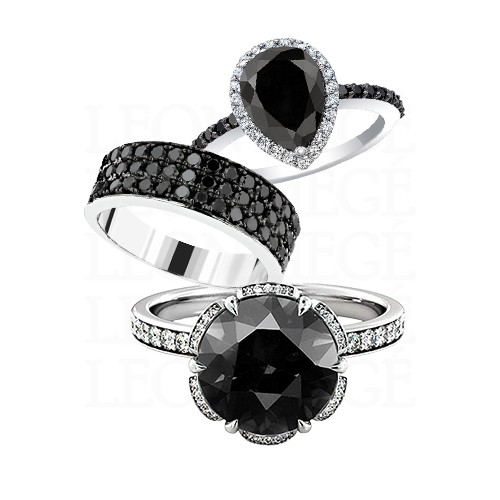

Salt and Pepper Diamonds
So-called “salt and pepper diamonds” have a mottled white and black pattern of inclusions generously sprinkled inside the crystal. No two salt and pepper diamonds ever look the same; their personalities are defined by the dirt and crystals trapped inside.
Historically these diamonds were called “bort,” a term used for stones pushed to the edge of a sorting tray to be discarded into a pile of industrial-grade trash. In a triumph of marketing, the worthless junk was given a cute name and became a darling of pretentious “jewelry artists.” Like a traditional diamond, salt and pepper stones can be any shape and size.
